Succulents are more than just symbols of strength and resilience; they’re popular houseplants that add charm and vibrancy to any home. Their unique appearance and low-maintenance nature make them a favorite choice for windowsills and balconies.
To truly appreciate succulents and understand how they differ from other plants like cacti, it’s essential to explore what a succulent is and its unique characteristics. Join Green Sedum as we uncover the intriguing details of these fascinating plants and their place in home decor.
1. What is a succulent?
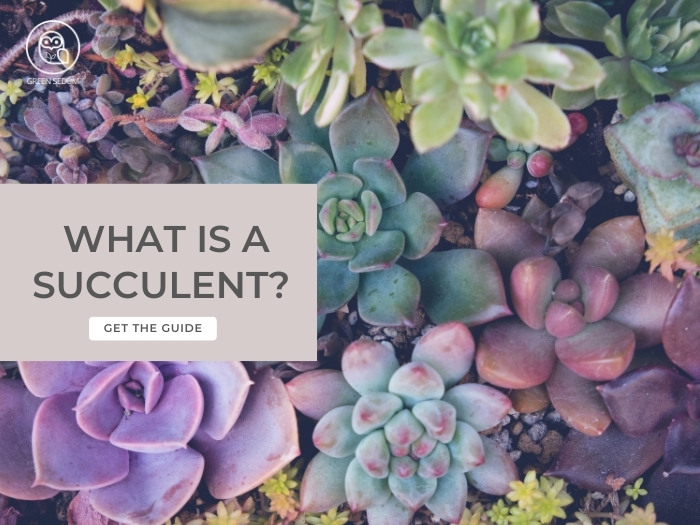
Have you ever heard of succulents? These natural wonders are truly something special!
Succulents, also known as “fat plants” or “fleshy plants,” have thicker and fleshier structures compared to ordinary plants. This unique adaptation allows them to retain water more effectively, making them well-suited for arid environments and harsh climates.
According to Wikipedia, the term “succulent” comes from the Latin word for juice or sap. This means these plants have mastered the art of “water storage,” allowing them to thrive in various climates and tough conditions. Whether they store water in their leaves or stems, the key is they always remain “plump and juicy.”
There are about 60 different families of succulents, showcasing incredible diversity. These plants generally thrive in high temperatures and low rainfall. So, whether it’s cool or hot, they always manage to look “radiant” and “beautiful.”
Cacti are part of the succulent family, but each type of cactus has its own specific name. When we refer to “succulent plants,” we’re usually talking about varieties like Echeveria, Haworthia, Kalanchoe, Monilaria, Crassula, Senecio, and Sempervivum.
2. Differences between succulents and cacti
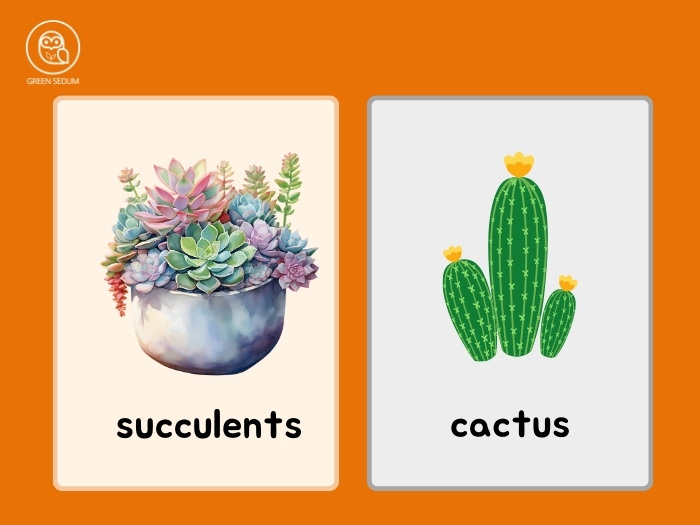
| Characteristic | Succulent | Cactus |
| Structure | Typically characterized by thick, fleshy leaves. | Usually feature thick stems, often without leaves. |
| Water Needs | Generally low-maintenance, requiring minimal watering, but may be more susceptible to diseases compared to cacti. | Easy to care for, requiring little water, and known for their resilience and durability. |
| Native Habitat | Predominantly found in hot regions near the equator such as Mexico, South America, Australia, and Africa. | Primarily thrive in arid regions like deserts in tropical and subtropical areas of South America, Africa, and Southeast Asia. |
| Purpose | Widely used for garden decoration, gifting, and indoor decor. | Commonly employed for both indoor and outdoor decoration. |
| Growth Rate | Generally slow-growing, though typically faster than cacti. | Tend to grow slowly. |
| Biodiversity | Around 60 families of succulents, comprising nearly 400 different species. | The Cactaceae family encompasses between 25 and 220 genera, with 1,500 to 1,800 species, depending on the source. |
| Special Care | Requires less direct sunlight compared to cacti. | Thrives with more direct sunlight exposure. |
| Popularity | Frequently utilized in landscape design projects. | Also commonly integrated into landscape design. |
3. The significance of succulents
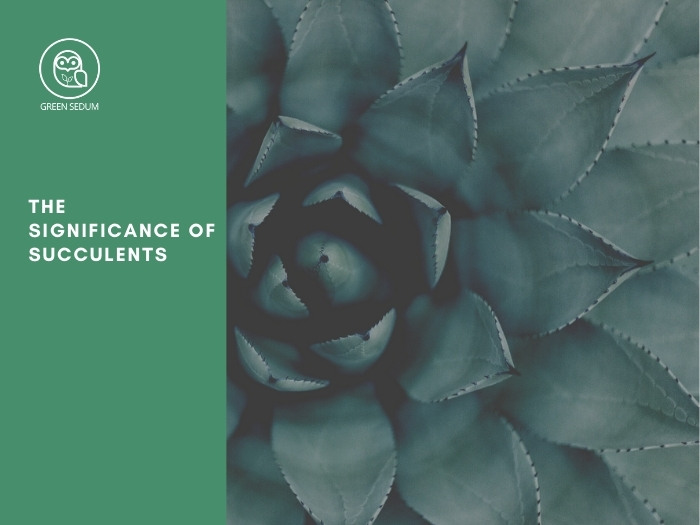
Succulents may not be as vibrant as peonies, as alluring as roses, as radiant as sunflowers, as elegant as orchids, or as pure as daisies. However, they captivate us with their resilience and perseverance, symbolizing steadfastness and determination.
Succulents are known for their ability to thrive in harsh conditions. When one leaf wilts, a fresh new leaf quickly takes its place. This quality makes succulents a symbol of enduring and indomitable spirit. For this reason, succulents are often used in bridal bouquets, representing eternal love.
When you look closely, you’ll notice that succulents have uniquely arranged leaves that resemble a lotus flower. Their green hue is simple yet exudes a subtle, pure, and graceful beauty. They don’t flaunt themselves with immediate brilliance, but they hold a special, understated charm that grows on you.
4. Benefits of succulents
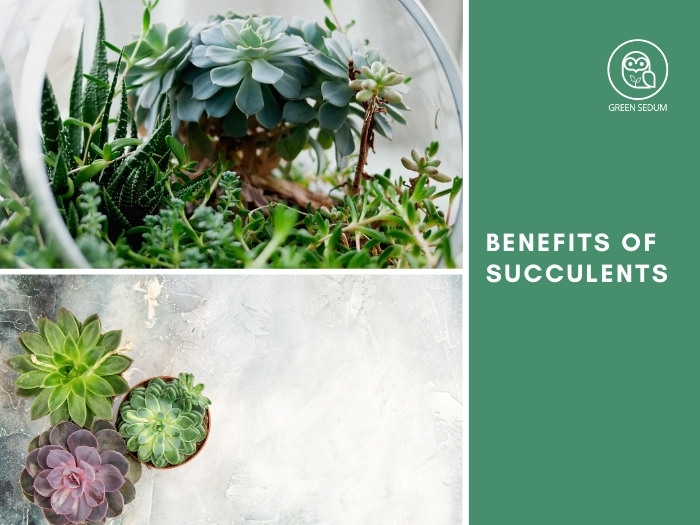
Succulents bring numerous benefits to our lives!
With their unique shapes and resilient nature, succulents are not only beautiful but also incredibly easy to care for. This makes them perfect for decorating homes, hotels, and offices. Their hardy nature means they require minimal maintenance, bringing a sense of peace and positive energy to any space.
Additionally, succulents make meaningful gifts. They symbolize longevity and eternal love, making them ideal presents for loved ones. When you give a succulent, you’re sharing heartfelt sentiments and wishing for a strong, lasting relationship.
>>> See related content:
- How to Care for Succulents: Common Mistakes and How to Avoid Them
- How to Propagate Succulents: A Beginner’s Journey to Plant Growth
- The Ultimate Guide on How Often to Water Succulents Indoors and Outdoors
5. Conclusion
In conclusion, what is a succulent? Succulents are remarkable plants known for their resilience and adaptability. Unlike many other plants, succulents are low-maintenance and can thrive in conditions that might challenge other species. They often feature thick leaves and come in a variety of shapes and sizes, making them a versatile choice for any garden or indoor space.
While they share similarities with cacti, such as their minimal water needs, succulents offer a broader range of forms and colors. Adding succulents to your garden or home brings a unique touch of natural beauty and tranquility.

I’m Will Bernan, a gardening enthusiast with over 9 years of experience in succulents, indoor plants, and sustainable living. I also manage SEO for eco-friendly textile brands, promoting fabrics like bamboo and organic cotton.

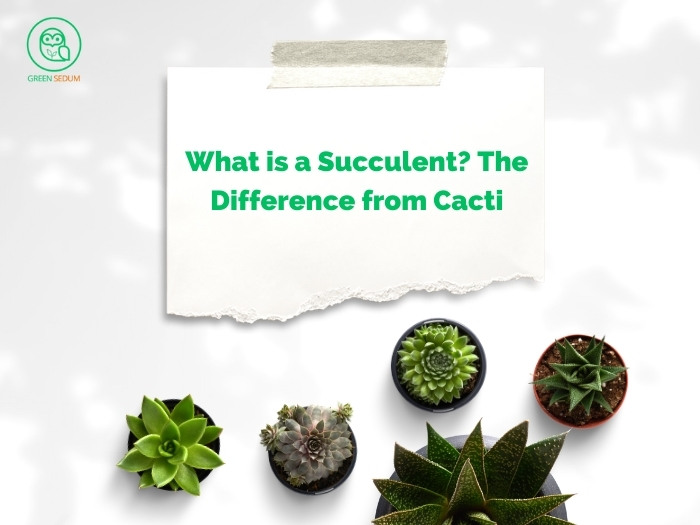
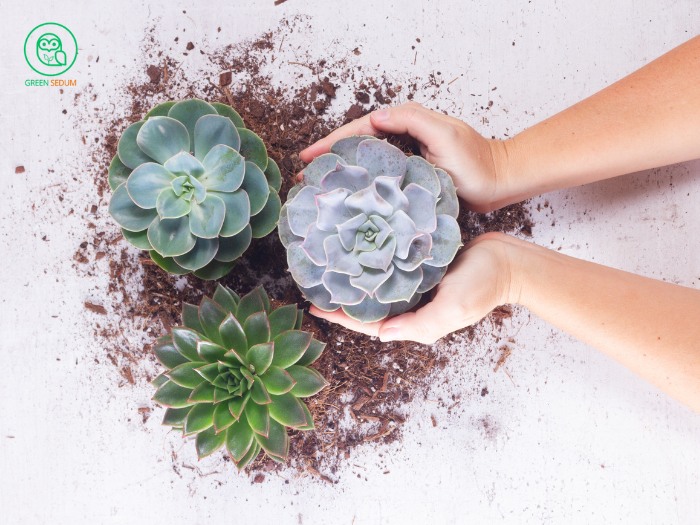
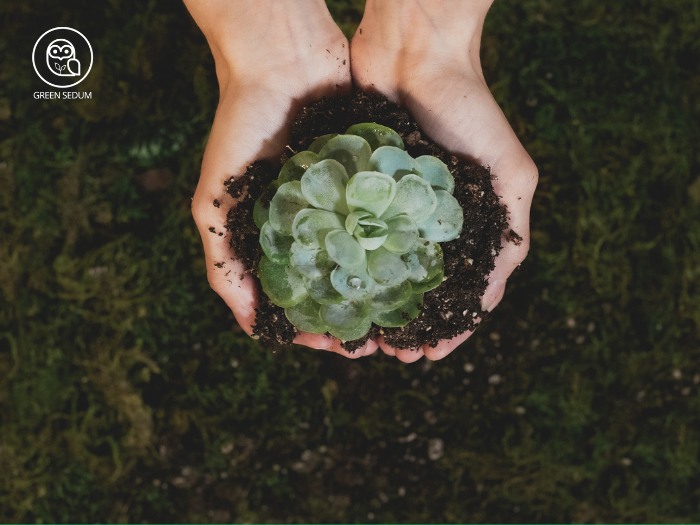
Pingback: A-Z Guide to Plant Succulents in Full Sun and Rain 2024
Pingback: How to Care for Succulents at Home: A Beginner’s Guide